Fifteen years ago, Yvette Livesey guest-edited Building magazine with her former partner and Manchester broadcaster, music mogul and all-round creative visionary Tony Wilson. She tells Nick Watt about their life and work together and how they came to play a significant part in the dramatic redevelopment of the city
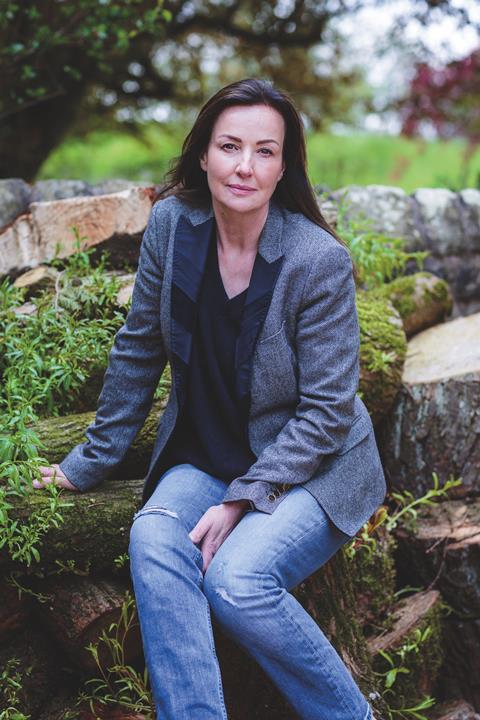

In January 2006, Yvette Livesey and her partner Tony Wilson guest edited an issue of Building magazine. Sadly, Salford-born Wilson, described by his biographer Paul Morley as “a committed northerner, loudmouth, know-it-all, broadcasting revolutionary, and music mogul (among other things)”, died less than 18 months later at the age of 57 from cancer at the Christie Hospital in Manchester.
Wilson was known not only as a Granada news presenter but also as the co-founder of Factory Records – home of Joy Division, New Order and the Happy Mondays – a partner in the iconic Hacienda nightclub (a former yacht showroom), and a co-founder of the In The City international music business conference with Livesey, which ran in Manchester for almost two decades.
>> Also read from the archive in 2006: The making of Manchester
>> Exclusive Andy Burnham interview: the talk of the town
As Martin Spring, the former architectural editor of Building magazine, pointed out in his introduction to the 2006 issue that Wilson and Livesey guest-edited, Wilson’s urban vision for Manchester and the North-west derived from his history of civilisation in four sentences:
Tony Wilson and Yvette Livesey’s edition of Building magazine in 2006
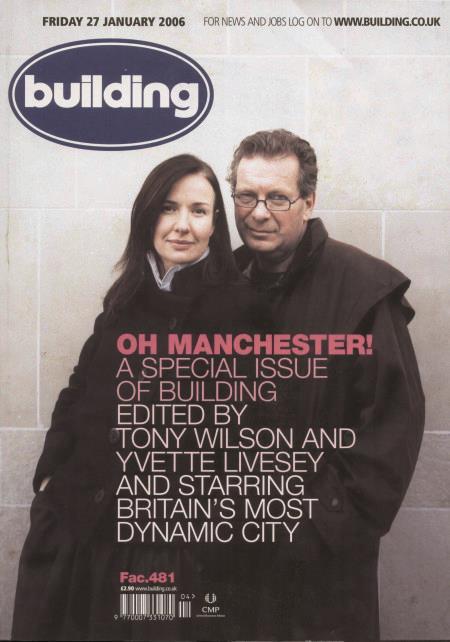
The edition of Building published on 27 January 2006 was the somewhat unlikely source for a completely new FAC number. Factory Records used the cataloguing system to identify all of its creative output and more – a party (FAC 83), a lawsuit (FAC 61) and a cat (FAC 191) appear on the list, as does Tony Wilson’s coffin (FAC 501). Joy Division’s single Love WIll Tear Us Apart (FAC 23) and New Order’s Blue Monday (FAC 73) are among the most famous of the iconic numbers.
FAC 481 was the number assigned to the Building magazine guest edited by Wilson and Livesey, which carried the headline “Oh Manchester: A special issue of Building edited by Tony Wilson and Yvette Livesey and starring Britain’s most dynamic city.” In the article “The making of Manchester”, architectural editor Martin Spring talked to Wilson about his new role as a “regeneration adviser” and his plans for Manchester.
Further articles on how Manchester was evolving were entitled “24-hour construction city”, “Greater expectations” and “How it used to be”.
“There have only been two real revolutions for homo sapiens. The first happened 12,000 years ago when people gave up hunting and gathering and settled down as farmers. The second was in the 18th and 19th centuries, when they became industrial beings.
“Manchester was the heart of this industrial revolution; Liverpool was its mouth, and east Lancashire its muscle. So our big idea is to celebrate what made the North-west great.”
With the death of Wilson, it seemed that some of the dynamism he and Livesey brought to Manchester would dissipate, especially as she also battled with two bouts of cancer. Nevertheless, both are fondly remembered in the city and by the people with whom they worked.
Wilson has a street named after him, not far from Whitworth Street, the birthplace of his Factory Records label. Livesey is now the proud mother of twin daughters and lives in Pennine Lancashire with her husband, the record company executive Chris Nuttall.
It has been over a decade since Livesey has spoken publicly about her life and work with Wilson over the 17 years that the pair of them spent together, and how the dramatic redevelopment of Manchester has shaped the city that was once her home.
I begin by asking her about where her journey began
I was born and brought up in the Ribble Valley, to the north of Greater Manchester. I started my career as a fashion model at the tender age of 14. I got picked up initially by Harrods and Vidal Sassoon and modelled for both.
That led to catwalk modelling for many top fashion brands while studying for my A-levels. I started to enter beauty pageants in my late teens and won Miss England when I was just eighteen. This was followed by the Miss Universe competition, which was held in Singapore.
When I came back to the UK, I decided to change my career completely. I knocked on the boss’s door at Granada TV and said I wanted to be a presenter.
I think he probably wondered who this girl was, but he must have seen something in me. He suggested going to Piccadilly Radio, which had an excellent newsroom, and learning my trade there. I managed to get a job and spent about a year and a half learning to become a journalist.
How did you end up running the most revered music business conference in the UK?
I met Tony in the early 1990s, and we started going out together. He took me to the New Music Seminar music business conference in New York in 1991, which was a real eye-opener. I was as captivated by the city as by the conference.
I had never been to a city quite like it. You would walk around at night and look up, and all the lights were on; people not only worked but lived in the city. I wanted to know why this didn’t happen in Manchester.
The following year Tony took me to the Midem music industry conference in Cannes. I couldn’t understand why there wasn’t a big music industry conference in the UK. So I suggested that we do it ourselves.
I would organise it; Tony would rally the independent labels, and our friends Elliot Rashman and Andy Dodd – who managed Simply Red – would mobilise the majors. We all put in something like five grand, and that’s how our In The City started.
Over two decades, we attracted some legendary speakers, including Led Zeppelin manager Peter Grant and Mathew Knowles, Beyonce’s father and manager. In the evenings, we took over almost every live music venue in the city centre and had unsigned bands, including the likes of Oasis, Coldplay, Muse and the Arctic Monkeys, playing their first gigs to the music industry.
Why did you decide to start an international music conference in Manchester rather than in London?
We knew that if we got the big label heads up to Manchester, they would have to stay. They couldn’t sneak back to their offices in London, partly because the west coast train line was so dreadful back in the early 1990s.
Because they had to stay in Manchester for two or three days, they came and decided to party. And that’s why it worked.
Although we took In The City to Dublin, Glasgow, Liverpool and New York, it was never the same, because Mancunians have something about them that is very open and unique. They did stuff because they wanted to be involved. And, if they made some money from it, fantastic.
They just wanted things to happen. Whereas every other city we went to, from the outset, it was: how can we make money out of this?
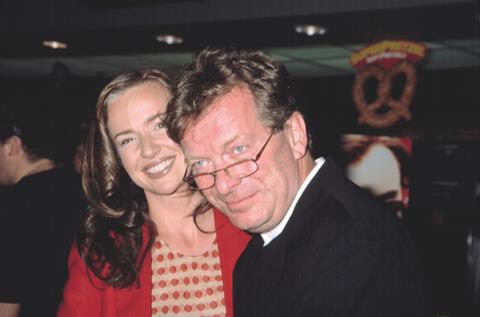
Did you and Tony have a shared vision for Manchester?
My idea of hell at the time was living in suburbia. We had just come back from another trip to New York, and I said to Tony, “I want to live in Manchester city centre.” Nobody was doing it back then. We found an old printing mill at the back of Deansgate, beside the station, and decided to convert the top floor into our apartment.
Other like-minded people were also thinking about living in the city. All of this happened because a few of us wanted to live in lofts, so we bought mills and warehouse spaces and we did them up and moved into town.
Now there are something like 30,000 people living in the centre of Manchester. It’s the fastest-growing city in Europe.
We were part of a bunch of creatives in Manchester that all hung out together. What set us apart was that we had our feet in both camps – the creatives and the city council.
For example, there’s a picture of the Hacienda club’s 10th birthday party in 1992 with us all on dodgem cars: at the back of the photo, you can see Graham Stringer and Pat Karney, the leader and deputy leader of Manchester city council, who were key players in the city’s transformation.
At that stage, we were also introduced to the Central Manchester Development Corporation (CNDC), which was set up to develop specific parts of Manchester. We were introduced to Jimmy Gregor, who played a significant role in the city’s redevelopment.
They threw a Christmas party in the early 1990s to which all the creatives were invited, along with the city council. What happened in Manchester is entirely down to the conversations that started at that party.
This spurred us all on, and we all started working together. For example, Urban Splash, the Manchester-based redevelopment company, was founded by Tom Bloxham, who used to sell Tony’s posters around town for him. The architect Ian Simpson started to do things in the city. And then Jim Ramsbottom, who ran betting companies, started to redevelop Castlefield.
It just all seemed to happen naturally. Although it brought both parties together, it took time for things to get going. The Arndale Centre bombing by the IRA in June 1996 brought much-needed money into the city and signified the start of it all.
However, Manchester didn’t happen because somebody dumped a pile of money on it. It happened because of the creatives, the city council and the people who lived there.
You founded the Livesey/Wilson Ideas Management company in 2006 and developed plans for the transformation of Pennine Lancashire. What happened to your ideas?
Max Steinberg, who was running a thing called Elevate, asked us to help him regenerate Pennine Lancashire. He was interesting in that he trusted creative people to come in and look at things and develop new ideas.
The area’s history is just astonishing. All these towns were at the centre of the Industrial Revolution. You would have expected bells, whistles and lights going off as you drive into those places, but instead, people seemed almost embarrassed to live there. Manchester and Mancunians are a different breed because they put all their effort and energy into their city. But for our ideas to work in these towns, we needed to get people to start believing in where they lived.
One idea we came up with was a national football museum. Places like Preston, Blackburn and Accrington had some of the oldest football clubs in the country, so it seemed so obvious.
We approached the chairman of Preston North End, who seemed interested, but decided to build a small club museum of his own. It took until July 2012, when Manchester city council took up our idea and housed the National Football Museum in Urbis – a building that up until then had seemed to lack purpose.
When I was 21, very few people my age could live outside London and be successful. But now you can live in the North-west and be world-class at what you do, which is all I ever wanted to achieve
One of the things that we wanted to build was the east Lancashire “fashion tower”. Although it still hasn’t come to fruition, things have started to change.
For example, Boohoo, the online fashion retailer, has announced plans to redevelop its site in Burnley. Blackburn is also on the up, with Mohsin and Zuber Issa, who bought Asda from Walmart in 2020, pumping money into the town.
Accrington, for instance, has got a great market and excellent housing stock which could provide the ideal commuter belt for Greater Manchester. In contrast, Clitheroe and the Ribble Valley are becoming a holiday destination.

All the towns in the area are starting to gain their own identity, which was something we wanted to achieve. Even the local buses use the logo of “Pennine Lancashire”, which we developed with Peter Saville, the legendary Factory sleeve designer and creative director of the City of Manchester.
When I was 21, very few people my age could live outside of London and be successful. But now you can live in the North-west and be world-class at what you do, which is all I ever wanted to achieve.
The current mayor of Greater Manchester, Andy Burnham, came to speak at In The City in 2008 when he was the secretary of state for culture, media and sport. What impact do you think he is having on the city?
In the beginning, we petitioned for mayors; we wanted mayors before they existed in their current form and the powers they now have. We desperately needed devolution from the central government. How can you understand what a city requires if you live in London?
If you live in a city, work in it, you know exactly what it needs. So it was necessary and important, and I think Andy is key to the city’s ongoing success. He plays out in the city; you see him in the clubs and bars with the people of Manchester. I think that’s the only way a city grows and develops – by having somebody who truly understands it.
There has been lots of talk about the current government’s levelling up agenda, specifically around the north of England. Have their initiatives impacted the area?
It hasn’t yet. It’s about money, isn’t it? I’ve tried to do some things in Blackpool, for example, but there has never been enough money to do them properly.
At the recent Tory party spring conference in Blackpool, Boris Johnson said what you need is the entrepreneurs coming in and doing stuff, but it’s a bit of a chicken and egg situation. Unless they believe big money will come, it won’t change.
Look at how Liverpool grew. Michael Heseltine put a bunch of Londoners into the city and gave them money to redevelop the city. So the local entrepreneurs believed and trusted that they wouldn’t be throwing good money after bad.
Unfortunately, as yet, I haven’t seen any evidence of money trickling into the area. All the stuff happening in Manchester is purely based on its self-belief.
How do you think the pandemic affected Manchester?
Covid showed up the weakness of Manchester. Many of the people I know who still lived in the city centre instantly moved out. They started to think: what am I doing here?
It’s just 20-somethings living in the city centre now, but what impact will that have on it? Do we need to rethink the city centre as a place for everyone?
Manchester has the opportunity to become one of those celebrated cities, a place that is instantly recognisable because of its iconic buildings and public spaces
I’ve got friends who have babies or want babies; these 30-something girls who currently live in the city centre are moving to towns in east Lancashire to bring up their kids. It’s great that these towns can grab those people back, but I don’t know how the city continues to sustain itself.
When you go around other big cities, you see schools in the city centre. There are basketball courts on almost every block in New York; art, and all kinds of stuff. So, there is that question mark. Who is going to build schools and other amenities needed by everyone who wants to live in the centre?
Do you think Tony would approve of all the redevelopment in Manchester?
There have been huge amounts of change over the past 30 years, but not all of it has worked. Bridgewater Hall, for example, had the opportunity to become an iconic building like the Sydney Opera House. But, sadly, it didn’t quite turn out like that, maybe because it was too developer-led. And that’s the way Manchester seems to be going. It’s OK, but sometimes feels a little bit lazy.
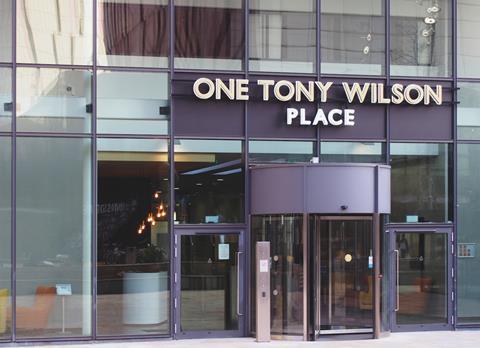
Manchester has the opportunity to become one of those celebrated cities, a place that is instantly recognisable because of its iconic buildings and public spaces. You think of Shanghai, Tokyo, London, Barcelona, New York or San Francisco … The closest we have to one of those buildings is the new Factory building – a new £110m arts centre designed by the Dutch architect Rem Koolhaas.
They have also done a tremendous job with Deansgate Square; the towers they’ve built are fabulous. We are definitely seeing the Manhattanisation of Manchester going on, partly because the city has no height restrictions. It’s fabulous because it hopefully means that people can stay in the centre of town, but it still needs some thought.
I think Tony would have been incredibly proud of what’s happened to his city. That is what we both wanted – a city where you can stay up north and be successful.
What changes would you still like to see in Manchester?
The city lacks the immediate visual identity that says “this is Manchester”. Walking around the city centre, you could be anywhere in the world. It’s not a bad thing. It’s brilliant that Manchester has become a global city. But then, I don’t know what characterises Manchester any more.
Over the past 40 years, it has been defined by its music industry, its football clubs and its people. And many of them have stayed and reinvested in the city, which is essential. For example, former Manchester United captain Gary Neville has invested heavily in St Michael’s in Manchester city centre.
But is this enough? We’re still missing those iconic buildings and spaces that would define the city. There is a fundamental dichotomy between culture, the buildings and a sense of place. Sometimes it feels that so many cities are becoming homogenised and cookie-cutter.
Sadly, a whole generation of people who did things in this city have now moved out. They just haven’t stayed. And that needs to change.
Finally, Yvette, what sort of things are you working on now?
Pre-covid, I started working with Ian Hooper to develop a national entertainment academy in Blackpool that should rival anything being done in London. Over the last year or so, I have also been in discussions with a friend of ours, ex Bloomberg NY lawyer Keir Ashton, on an idea very close to Tony’s heart: a museum of popular culture in Manchester.
Tony and I were working on a proposal before he died. I would love Manchester to run with it. It would be a great lasting legacy for all his work for the city.
Building’s Manchester week

It’s holiday season and Building is taking a staycation in Manchester: this week we zoom in on the north of England’s biggest and most vibrant city, talking to those shaping its skyline, creating workspaces, building homes, designing space for leisure and fun. Online features this week include:
- Monday 15 August: How Yvette Livesey helped make modern Manchester with the late great music mogul and urban theorist Tony Wilson
- Tuesday 16 August: A run-down of some of the movers and shakers in Mancunian development
- Wednesday 17 August: Mayfield Park is Manchester’s first new public park in a century
- Thursday 18 August: Manchester’s offices market has a host of new schemes in the pipeline
- Friday 19 August: Jodrell Bank has a new £20.5m visitor centre
You can also find all our Manchester articles in August’s print and digital edition out now
Andy Burnham interview: remaking Manchester

Manchester’s mayor on how green spaces, better infrastructure and the pursuit of net zero are at the heart of his ambitious plans for the city
- 1
- 2
 Currently
reading
Currently
reading
Tony Wilson’s legacy in Manchester: ‘A city where you can stay up north and be successful’
- 4
- 5
- 6
- 7



























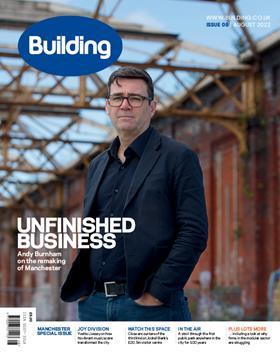













No comments yet